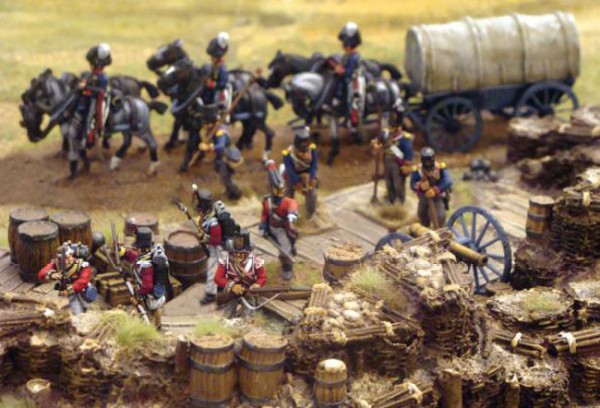
History: British Napoleonic Artillery
Following last Friday’s new wave of Peninsular Napoleonic British artillery releases, Warlord writer Sam Phillips wanted to shed a little more light on the history and capabilities of the British guns!

The common tactic of having your cannons placed on the high ground is usually what people think of when it comes to placing artillery. However this was not the best case in the Napoleonic period, as cannons were most effective at close and medium range. The artillery batteries sought out flat land with a good field of fire, preferably with no obstacles in the way! If placed on a hill, the trajectory of the shot could likely mean that the cannon ball would simply bounce over the head of an enemy.
The British batteries were a formidable sight on the battlefield, whether used in siege warfare or to support the infantry and cavalry. Able to fire rapidly under pressure, coping with the stench of gunpowder and reloading under fire from their opposite number, the cannon crew would be essential to maintaining fire support as an army advanced.
This horse drawn artillery of the British army could march 10-15 miles a day, with full crew and lumber snaking behind the main force.
The 5.5 howitzer was used for siege warfare as well as on the battlefield. Unlike the mortars of the period, the howitzer was more manoeuvrable, but could still fire a projectile over a greater distance and could do so indirectly. The howitzer fired a high explosive shot, blowing apart anything the round hit. Alternatively it could also fire a flammable round (carcass) and rounds for illuminating the battlefield.
The six pounder was one of the lightest cannons that the British could bring to bear, firing a 6 pound lead shot. Light and easy to manoeuvre by horse, these guns could be relocated in a decent amount of time. Introduced in 1793 to give valuable heavy support to the cavalry, the six pounder was an improvement on the much smaller three pounder which was still in use at the time. With this cannon, heavier support could be brought in and still keep up with the cavalry units when on the march. The six pounder could achieve roughly 55 hits at 200 yards but this lessened when the targets were further away, only achieving 6 hits with roundshot at 600 yards.
Its larger cousin, the 9 pounder would be more commonly seen on a ship of the line than the battlefield. The cannon fired a heavy calibre shot at a greater range, whilst still being able to be manoeuvred relatively easily. Whilst heavier than its smaller cousin, it brought greater range and heavier firepower, making it useful not just against both infantry and cavalry but also of use in siege warfare. The 9 pounder had a range of around 800 yards if loaded with roundshot and about 500 yards if loaded with canister. However it was most effective at 350 yards, which was found to be the best range for causing maximum damage.
Each cannon could be loaded with round shot, a solid lead ball in various sizes, which was designed to create an entrance point for infantry to clamber through when up against buildings or fortifications. Alternatively it was effective against infantry formation if fired at them with the shot passing through at an angle. When loaded with canister (which featured a timed charge) the projectile once fired would explode, peppering an area with hundreds of musket balls. The shot could decimate infantry formations, scattering its payload over a wide area, causing havoc and horrific injuries to those nearby.
Grapeshot was similar to the canister, but fired a much heavy calibre lead shot. Designed for ship to ship warfare, it was equally as devastating on the open battlefields. These anti-infantry rounds were devastating, especially as most infantry fought in tight formations, so suffering horrendous amounts of damage. Grapeshot was used for breaking an infantry formation apart, as the French marched in huge columns towards the thin red line of the British infantry. The British artillery batteries were great at softening up and discouraging the enemy, allowing the other elements of the army to move in and engage.
Article written by Sam Phillips
You might also like…
 History: Napoleonic era British Infantry
History: Napoleonic era British Infantry History: Napoleonic French Column vs British Line
History: Napoleonic French Column vs British Line History: The Battle of Talavera 1809
History: The Battle of Talavera 1809 New: Napoleonic British Artillery
New: Napoleonic British Artillery New: Napoleonic British Starter Army boxed set
New: Napoleonic British Starter Army boxed set History: Major-General Robert Craufurd (1764 – 1812)
History: Major-General Robert Craufurd (1764 – 1812) History: The 100 Days Campaign
History: The 100 Days Campaign History: The Peninsular Campaign
History: The Peninsular Campaign




